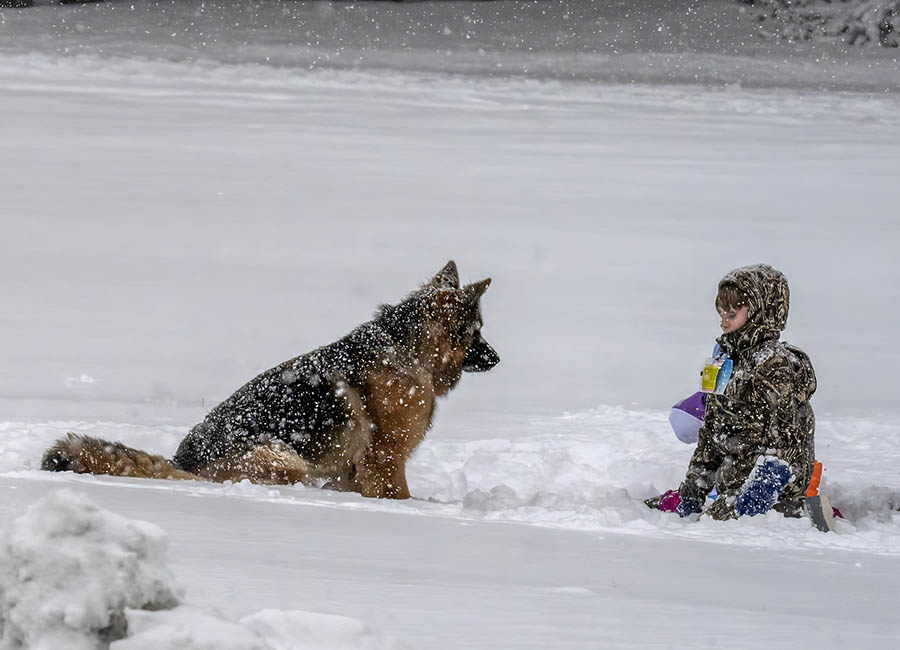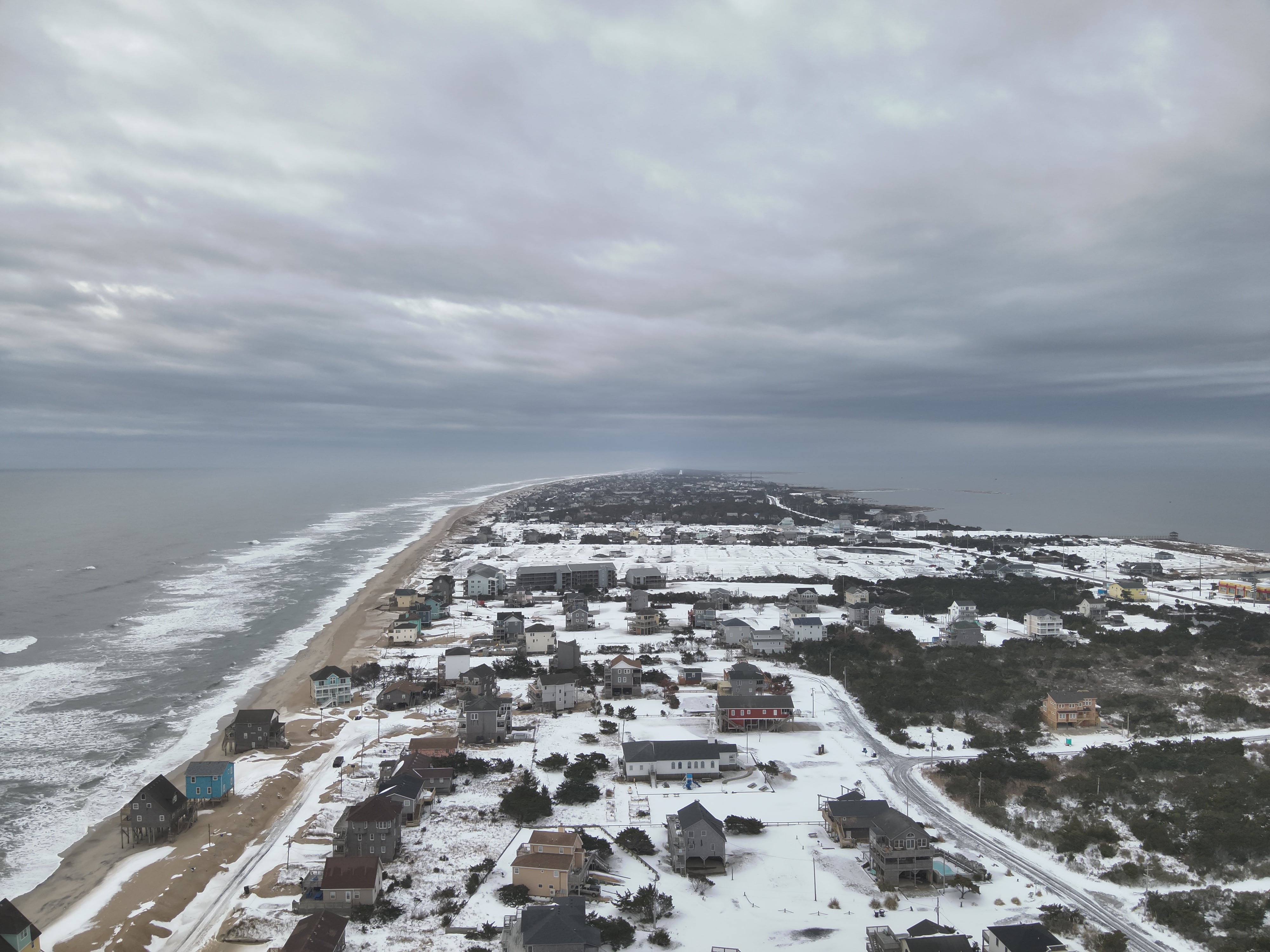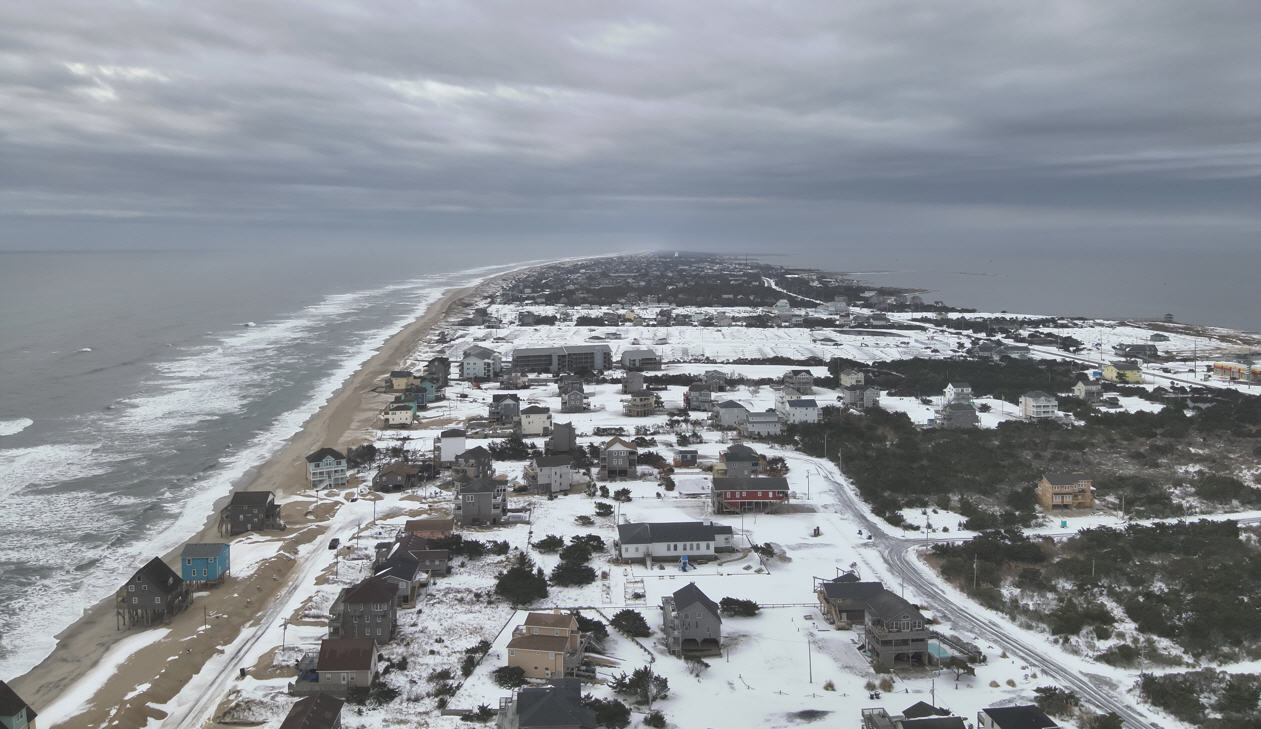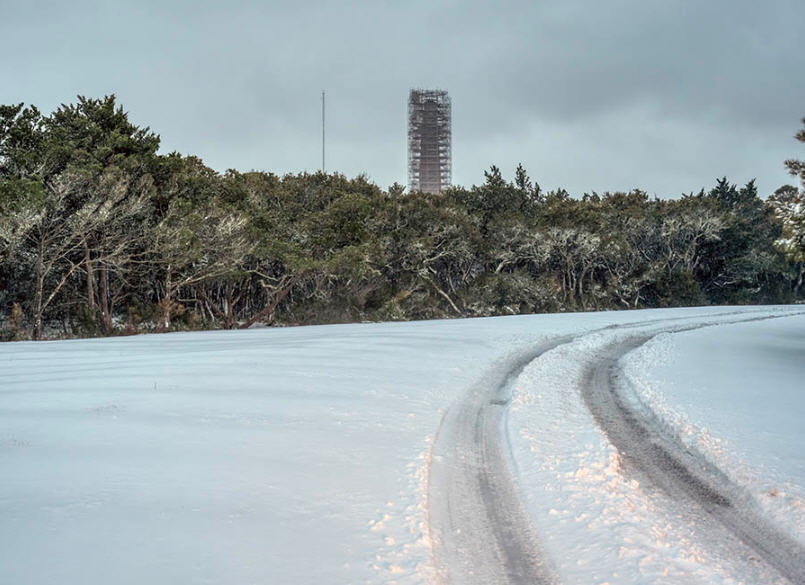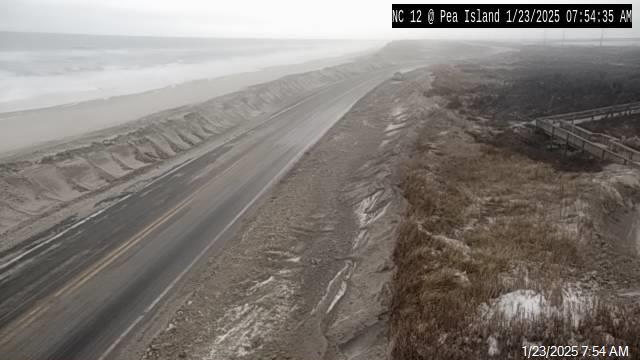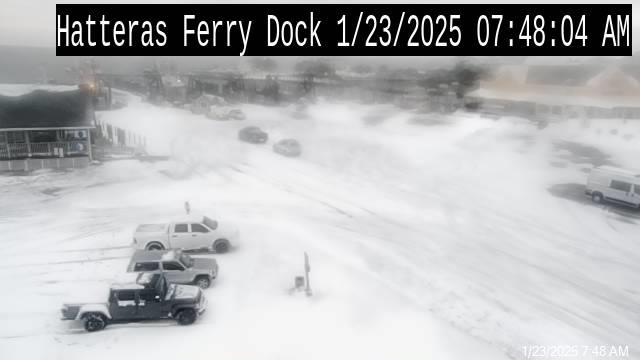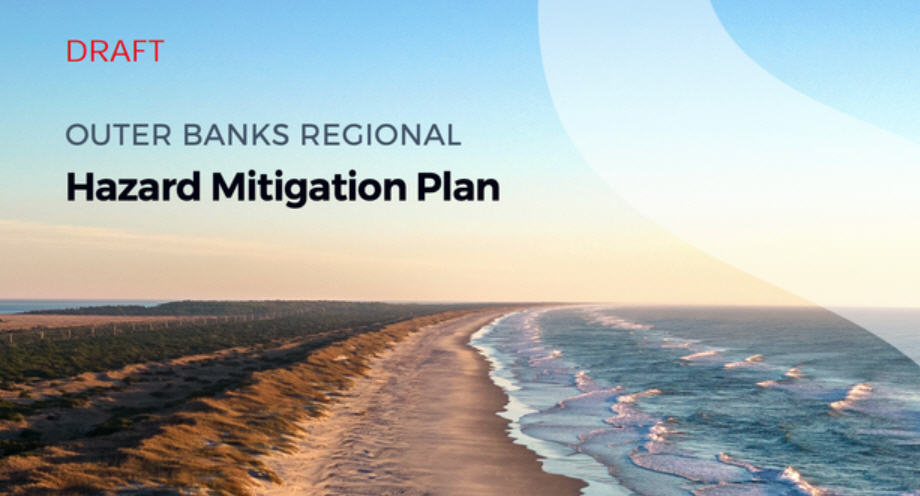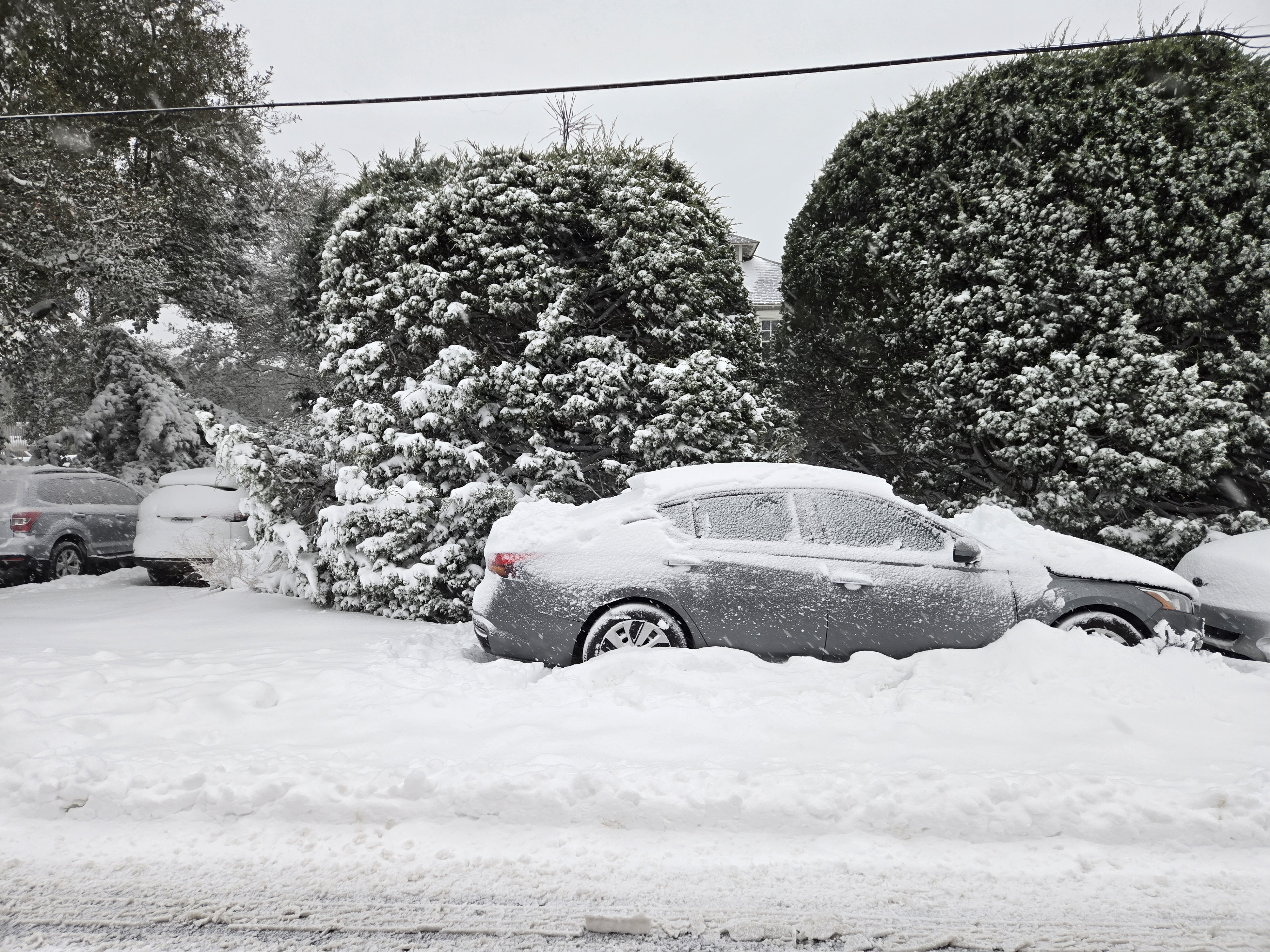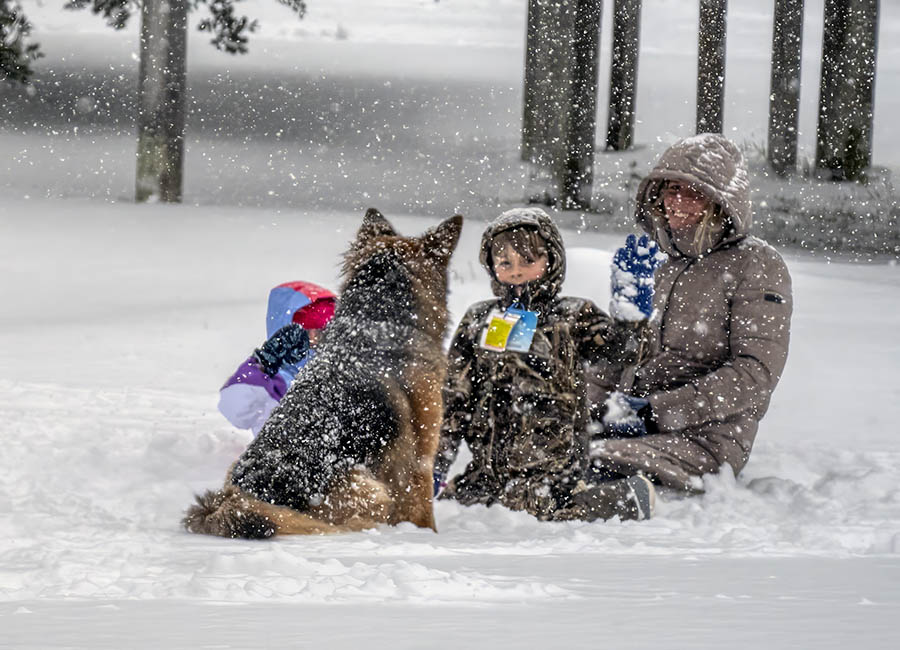DOT plans to open Highway 12 to all vehicles by Christmas
North Carolina Department of Transportation officials said today that the preferred short-term solution to repairing Highway 12 at the S-curves in northern Rodanthe will be replacing sandbags and dunes and repairing the highway where it was before it was damaged by Hurricane Sandy and a series of northeasters.
Pablo Hernandez, resident construction engineer on the project, said today that, if weather and tides cooperate, the work will be finished on or before Christmas Day.
He added that DOT is also pursuing with the U.S. Army Corps of Engineers renourishment of the beach at the S-curves. The corps, he said, is taking the lead on that project, separately from DOT efforts to replace the road.
Also, he said, DOT is concurrently preparing plans to move the highway to the west and add a short bridge around the troublesome area of the S-curves in case that option is needed later before there is a long-term solution to stabilizing the road there.
According to a news release, DOT crews are now working on the temporary solution to reconnect all traffic on Hatteras Island to points north of Mirlo Beach. This multi-step process includes installing sandbags, reconstructing the dunes, and rebuilding the road.
Crews are currently placing 15-foot-long sandbags along a 4-tenths of a mile section of Highway 12 at the S-curves. In all, crews will place 1,800 new sandbags to create a protective barrier between the ocean and the road. Once the sandbags are in place, crews will rebuild the dunes on top of the sandbags.
At the same time, crews are also removing broken pavement from this section of the road. After sandbags are installed at the most heavily damaged parts of the highway, crews will begin rebuilding the road where it was located before the series of storms hit.
Weather permitting, crews hope to open the newly paved lanes of Highway 12 to all traffic on or by Dec. 25. Until then, four-wheel-drive vehicles must continue to pass through checkpoints at the temporary bridge on Pea Island and at Mirlo Beach to travel between Hatteras Island and the mainland.
Hernandez says he understands the public’s frustration with the delays because he and the crews working on the highway feel the same way after they basically spent three weeks spinning their wheels while northeast winds, heavy seas, and high tides sent overwash over the highway for days on end, leaving them unable to begin any repairs.
“It’s a shame the clock has been reset,” Hernandez said today. “If we’d had the weather, we’d be gone by now.”
And, he added, “No one wants to be out here at Christmas.”
A number of Island Free Press readers have asked about gravel or wooden or metals mats so that two-wheel-drive vehicles can negotiate the four-wheel-drive route.
Hernandez said none of those options are really feasible for several different reasons, including the fact that preparing the road for all vehicles could require different permitting, which could slow the process down again.
He said wooden mats were used after Hurricane Irene but only for construction vehicles and they would not work for the traveling public and two-wheel-drives.
He also noted that the U.S. Fish and Wildlife Service has been “very cooperative” and that “99 percent of the four-wheel-drive route” is on refuge property.
Motorists are reminded that any vehicle with a payload larger than one ton cannot use the four-wheel-drive route in order to protect access and allow traffic to flow more efficiently. In addition, private trucks with trailers are not permitted. Two-wheel-drive vehicles are not allowed on the route under any circumstance.
Drivers of four-wheel-drive vehicles should expect a rough ride, which will include traveling over sand, damaged pavement, and some water. On the sandy portions of the route, they will follow lane markers comprised of barrels, cones, and/or flags.
The four-wheel-drive route is open from 5 a.m. until 10 p.m.
NCDOT asks motorists to follow these important safety measures on the four-wheel drive access:
Only drive four-wheel-drive vehicles with a high ground clearance. Cross-over four-wheel drive vehicles that are lower to the ground may get stuck in the rugged terrain;
If you drive at night, use extreme caution. There will are no lights staged along the route, so your vehicle’s headlights will offer the only way for you to see;
Drive slowly;
Pay close attention to the temporary traffic signals; and
All four-wheel drive vehicles are encouraged to lower tire pressure to minimize the chances of becoming stuck.
More information on N.C. 12 recovery efforts is available on our N.C. 12 Recovery webpage and N.C. 12 Facebook page. For the latest details on the emergency ferry route, as well as schedules for our regular ferry routes, call 1-800-BY-FERRY and press 1, or visit the NCDOT Ferry page.
In addition, a new webpage that showcases projects along N.C. 12 from the replacement of the Bonner Bridge to short and long-term solutions for the breaches caused by Hurricane Irene last year is now live at http://www.ncdot.gov/nc12/.




